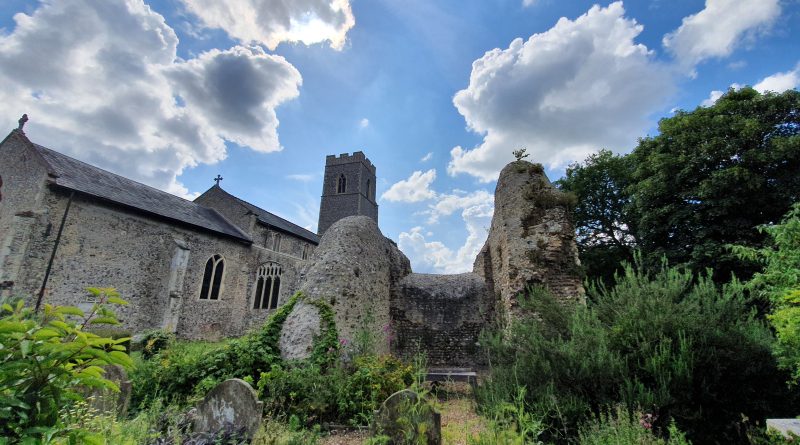South Walsham – Church of St. Lawrence
South Walsham only has three listed buildings, although that’s still a fair number, but all three are located in this one churchyard. The first is the Church of St. Lawrence (in the front of the above photo), the second is the collapsed tower of St. Lawrence (just visible in the middle of the above photo) and the other is the larger Church of St. Mary (at the rear of the above photo).
The church was originally built in the fourteenth century, likely on the same site as an earlier religious building. The idea of having two churches next to each other seems slightly illogical today, although if you’ve got two different parishes and one particularly decent piece of land, then it does make some sense to have two different buildings at the same site. And, this worked well enough until the fire that destroyed most of the church in 1827.
The above photo is of the north side of the church, with the central window being bricked up.
The doors to the church give the appearance of having fire damage to their base, which would be a permanent reminder of 1827. The locals didn’t though merge the churches even when faced with the problem that one of them was burnt out, instead rebuilding much of the former chancel and re-opening in 1832. The two churches then continued separately until 1890, when their congregations were merged.
This meant that St. Lawrence’s church was left to become derelict, seemingly forever destined to fall under the shadow of St. Mary’s. But, a recent restoration of the building has returned it to use as an arts centre, with photos on their web-site with the scale of the challenge they had.
The churchyard is well-kept, all very neat.
This is what is left of the tower of St. Lawrence, badly damaged by fire in 1827 and then what remained collapsed in 1971 (George Plunkett’s archive has a photo of the tower in 1937 as it looked before the collapse). Today, the area is used as the Sacristan’s Garden and contains medicinal herbs and plants and reflects what may have been grown in the medieval period.
The Sacristan’s Garden, looking towards the main part of St. Lawrence’s Church.
The flushwork design is still present at the base of the tower.








